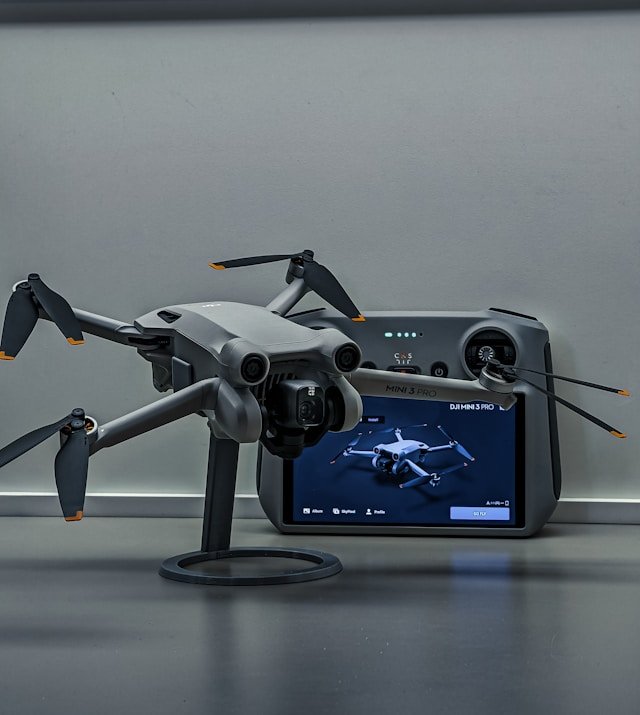Mastering Technology and Operation Management in 2025
Introduction: The Evolving Role of Technology and Operation Management
Many believe that technology and operation management are just about automating repetitive tasks. While automation plays a significant role, the true value of technology lies in its ability to transform entire workflows, enhance decision-making, and drive innovation. In 2025, businesses that fail to integrate technology effectively risk being left behind in an increasingly competitive landscape.
Technology is no longer an optional add-on; it is the backbone of modern operations management. Whether it’s improving supply chain efficiency, enabling real-time data insights, or aligning teams across geographies, technology is the key to operational excellence. This blog will guide you through the essentials of mastering technology and operation management, starting with a deep dive into the basics and benefits of this transformative field.
Understanding the Basics of Technology and Operation Management
What Is Technology and Operation Management?
Contrary to popular belief, technology and operations management isn’t limited to IT systems or software solutions. It’s the strategic use of technology to enhance every aspect of operations—from production processes to customer service delivery. It encompasses tools, systems, and methodologies that optimize resources, improve workflows, and ensure business goals are met efficiently.
For example, integrating technology like Enterprise Resource Planning (ERP) solutions allows businesses to streamline complex processes such as inventory management, procurement, and financial reporting. By doing so, companies can eliminate bottlenecks and focus on strategic growth.
How Technology Transforms Operations
A common misconception is that technology simply replaces manual tasks. However, its true power lies in enabling smarter workflows and better decision-making. For instance:
- Real-time data analysis: Tools like predictive analytics provide actionable insights, allowing businesses to anticipate challenges and seize opportunities.
- Collaboration tools: Platforms such as Slack or Microsoft Teams facilitate seamless communication, breaking down silos between departments.
- Process automation: Software solutions automate repetitive tasks, reducing errors and freeing up employees for higher-value work.
These transformations are not just theoretical; companies that leverage these technologies often report higher productivity, improved customer satisfaction, and significant cost savings.
The Importance of Aligning Technology with Business Goals
Many businesses fall into the trap of adopting technology for technology’s sake. But without alignment with operational goals, even the most advanced tools can become costly liabilities. Successful organizations start by identifying their operational challenges and then selecting technologies that address those specific needs.
For example, a retail business struggling with inventory management might invest in cloud-based inventory solutions to track stock levels in real-time, ensuring optimal stock levels and reducing waste.
Key Benefits of Technology and Operation Management
Enhanced Efficiency and Productivity
One of the most significant misconceptions is that technology only benefits large enterprises. In reality, businesses of all sizes can harness technology to boost efficiency and productivity. Consider small businesses leveraging workflow optimization tools to streamline operations, allowing them to compete with larger players.
Automation software, for instance, eliminates the need for manual data entry, significantly reducing errors and accelerating processes. Additionally, tools like AI-powered chatbots handle customer queries efficiently, freeing up human resources for strategic tasks.
Improved Decision-Making with Real-Time Data
Gone are the days when managers relied on outdated reports to make decisions. With technology, decision-making is now driven by real-time data insights. For example:
- Predictive analytics tools can forecast demand, helping businesses optimize production schedules.
- Real-time dashboards provide a snapshot of key performance indicators (KPIs), enabling quick adjustments when necessary.
Such data-driven decision-making ensures that businesses stay agile and responsive in a rapidly changing market.
Cost Savings Through Automation
Some argue that investing in technology is too expensive for businesses with tight budgets. However, the long-term cost savings often outweigh the initial investment. Automation tools reduce labor costs, minimize errors, and improve resource utilization.
For example, robotic process automation (RPA) can handle repetitive tasks like invoice processing or inventory updates, reducing the need for manual intervention. This not only saves time but also ensures accuracy, leading to better financial outcomes.
Better Collaboration and Team Alignment
Effective operations management requires seamless collaboration across teams. Technology facilitates this by providing platforms that enable real-time communication and file sharing. Cloud-based tools ensure that teams, whether remote or in-office, remain aligned on objectives and deliverables.
For instance, project management tools like Trello or Asana allow teams to track progress, set deadlines, and resolve bottlenecks, ensuring projects are completed efficiently and on time.
Proven Strategies for Technology Integration in Operations
Steps to Effectively Align Technology with Operations
Many organizations believe that technology integration is as simple as installing software. However, the key to success lies in a strategic approach that ensures alignment with business objectives. Start by identifying operational pain points and prioritizing areas that can benefit most from technological solutions.
For example, a company facing delays in order processing could implement an AI-powered order management system to streamline workflows and improve turnaround times.
Implementing Workflow Optimization Tools
Workflow optimization is critical for achieving operational efficiency. Tools like Monday.com or Wrike offer advanced features to visualize workflows, identify bottlenecks, and automate routine tasks. These tools enable businesses to:
- Improve task allocation and scheduling.
- Ensure real-time tracking of project progress.
- Reduce manual errors through automation.
By implementing such tools, businesses can focus on strategic initiatives rather than administrative tasks.
Sustainable Practices in Technology and Operations
Sustainability is not just a buzzword; it’s a necessity in today’s business landscape. Integrating sustainable practices with technology can reduce environmental impact while optimizing operations. Examples include:
- Using IoT-enabled devices to monitor and reduce energy consumption.
- Implementing cloud solutions to minimize physical infrastructure needs.
- Leveraging predictive maintenance tools to extend equipment lifespan.
These practices not only contribute to a greener planet but also result in significant cost savings over time.
Case Studies of Successful Technology-Driven Strategies
Real-world examples can provide invaluable insights into the practical application of technology in operations management. Consider the case of a global retailer that adopted a cloud-based inventory management system. By doing so, they:
- Reduced inventory holding costs by 20%.
- Improved stock availability and customer satisfaction.
- Enhanced decision-making with real-time data insights.
Such success stories underscore the potential of technology to drive operational excellence and business growth.
Emerging Technologies Revolutionizing Operations Management
The Role of Artificial Intelligence in Operations Management
It’s often assumed that AI is only for tech giants or complex applications. However, artificial intelligence is becoming accessible and essential for businesses of all sizes. In operations management, AI powers predictive analytics, demand forecasting, and process optimization.
- Predictive Maintenance: AI monitors equipment health, predicting failures before they occur and reducing downtime. This not only ensures seamless operations but also saves costs associated with emergency repairs.
- Supply Chain Optimization: Machine learning models analyze supply chain data to improve route planning, inventory management, and demand predictions, ensuring smoother and cost-effective operations.
For example, a manufacturing company using AI-powered sensors reduced machine downtime by 25%, ensuring production targets were consistently met.
Blockchain in Operations: Beyond Cryptocurrencies
Blockchain isn’t just about Bitcoin or digital currencies. In operations management, blockchain brings transparency and security to supply chain management and record-keeping.
- Enhanced Traceability: Blockchain enables end-to-end tracking of products in the supply chain, building consumer trust and simplifying recalls in case of defects.
- Smart Contracts: Automating contract execution reduces delays and removes the need for intermediaries, ensuring efficient operations.
IoT-Enabled Operational Excellence
The Internet of Things (IoT) is transforming how businesses manage their operations. By connecting devices and systems, IoT provides real-time data that enhances decision-making.
- Warehouse Management: IoT sensors monitor inventory levels, ensuring optimal stock levels and preventing overstocking or stockouts.
- Energy Management: Smart sensors track energy consumption, enabling businesses to reduce wastage and lower operational costs.
Overcoming Challenges in Technology and Operations Management
Addressing Resistance to Change
A widespread belief is that implementing new technologies will automatically lead to employee pushback. While resistance to change is natural, it can be mitigated with the right strategies:
- Training and Development: Providing comprehensive training ensures employees are comfortable with new tools and understand their value.
- Clear Communication: Highlighting the benefits of technology, such as reduced workloads and increased efficiency, can foster a positive outlook.
- Inclusive Decision-Making: Involving employees in the technology selection process creates a sense of ownership and reduces resistance.
Managing Implementation Costs
Another common concern is the perceived high cost of adopting advanced technologies. However, businesses can mitigate this by:
- Prioritizing Investments: Focusing on high-impact areas, such as supply chain management or customer service, ensures quick ROI.
- Leveraging Scalable Solutions: Choosing modular technologies allows businesses to expand capabilities as budgets permit.
Measuring Success in Technology and Operations Management
Key Performance Indicators (KPIs) for Operational Efficiency
Measuring success begins with identifying the right KPIs. Common metrics include:
- Cost Efficiency: Evaluating the impact of technology on reducing operational costs.
- Process Cycle Time: Measuring improvements in the speed of production or service delivery.
- Error Rates: Tracking reductions in manual errors due to automation.
Tracking ROI of Technology Investments
Many businesses overlook the importance of evaluating their technology investments. To accurately measure ROI:
- Calculate savings achieved through automation or improved efficiency.
- Assess growth in revenue or customer satisfaction driven by technological improvements.
- Use dashboards to visualize real-time performance metrics for easier decision-making.
Future Trends in Technology and Operations Management
Embracing Artificial Intelligence and Machine Learning
The future of operations management will increasingly rely on AI and ML technologies. These tools will enable businesses to:
- Predict market trends with higher accuracy.
- Enhance customer experiences through personalized interactions.
- Automate complex decision-making processes.
Adoption of Autonomous Systems
Autonomous systems, including self-driving vehicles and smart robots, are expected to revolutionize logistics and manufacturing. Key benefits include:
- Improved operational speed and reduced errors.
- Enhanced worker safety in high-risk environments.
Fostering a Culture of Continuous Innovation
Staying competitive in the future requires businesses to:
- Regularly update their technology stack.
- Encourage employee innovation and cross-functional collaboration.
- Invest in emerging technologies that align with their operational goals.
Conclusion: Harnessing the Power of Technology for Operational Excellence
The journey to mastering technology and operations management is both challenging and rewarding. While the misconceptions around technology often create hesitations, the reality is clear: businesses that embrace technological innovation position themselves for long-term success.
Key takeaways from this blog include:
- Technology is not merely a tool but a strategic enabler that enhances efficiency, decision-making, and collaboration.
- Addressing challenges like resistance to change and implementation costs requires a proactive and inclusive approach.
- Future trends such as AI, autonomous systems, and continuous innovation are shaping the next era of operational excellence.
As we move further into 2025 and beyond, integrating the right technologies aligned with business goals will be the defining factor for staying competitive. By fostering a culture that values innovation and adaptability, businesses can transform operations into a powerful drivers of growth and sustainability.
The time to act is now—embrace the future of technology and operations management to unlock your business’s full potential.







